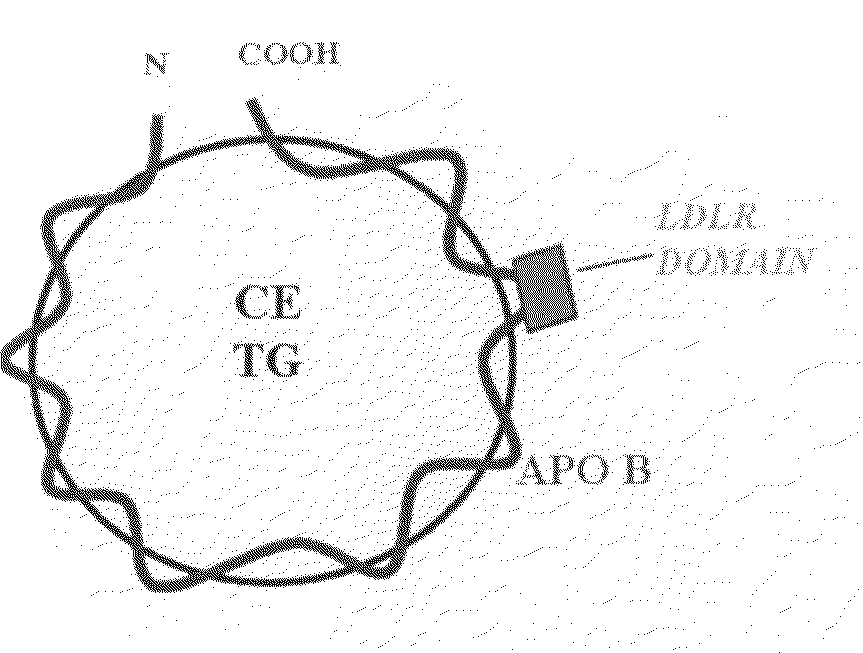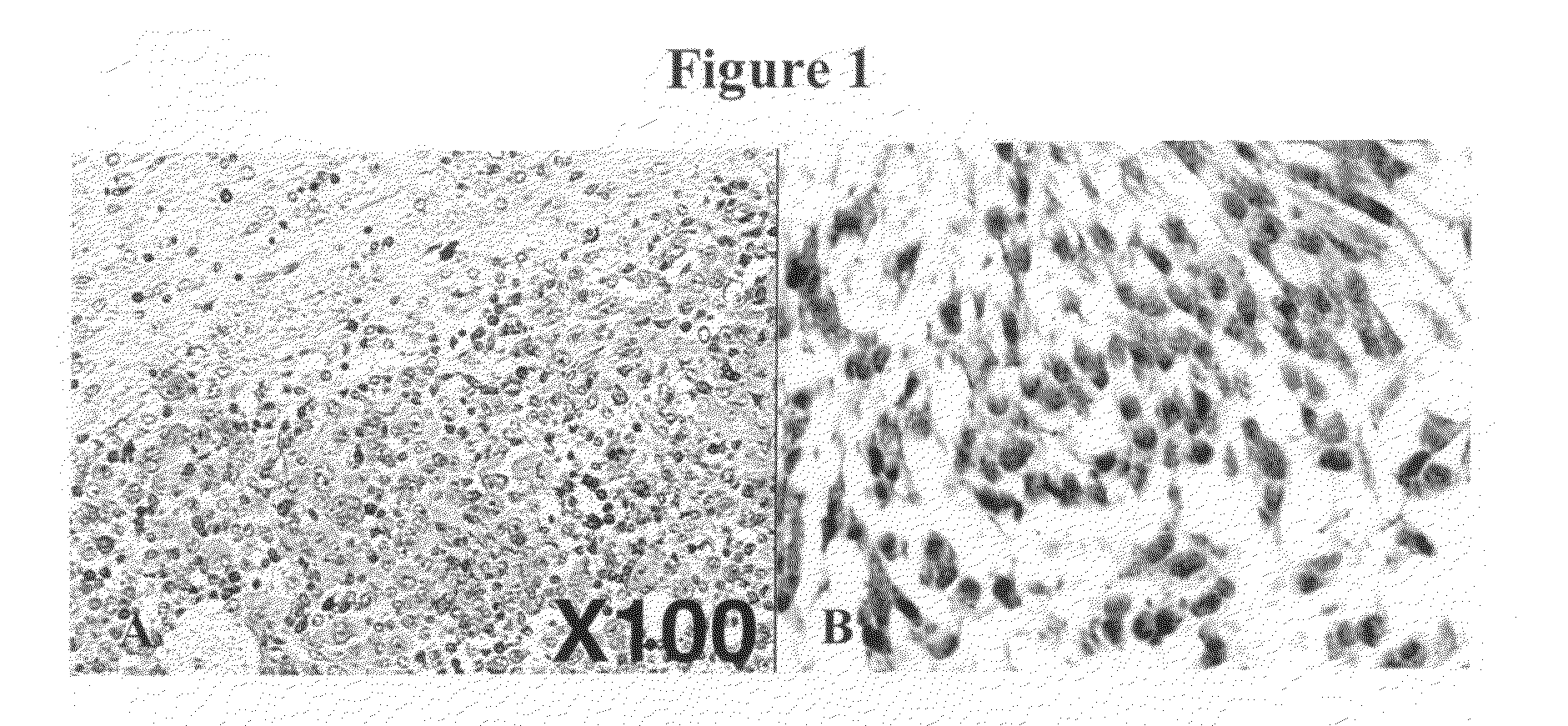Synthetic LDL as Targeted Drug Delivery Vehicle
a drug delivery and synthetic ldl technology, applied in the direction of peptide/protein ingredients, metabolism disorders, therapy, etc., can solve the problems of drug delivery to the brain, drug delivery across the bbb is further problematic, and the current method of drug delivery in the treatment of brain diseases is generally non-specific, complex to perform, and high cos
- Summary
- Abstract
- Description
- Claims
- Application Information
AI Technical Summary
Benefits of technology
Problems solved by technology
Method used
Image
Examples
example 1
LDLR Present In Vitro in Cell Lines and In Vivo
[0160]LDLR in human glioblastoma cell lines: It has previously been shown that the human glioma cell line, SF-767, can internalize boronated protoporphyrin (BOPP), and by employing fluorescence microscopy, it has been shown that this intrinsically fluorescing compound is localized in the lysosome (Callahan, D. E. et al., Int J Radiat Oncol Biol Phys 45:761-771 (1999)). Since porphyrins are known to bind to LDL, it was hypothesized that LDL-associated BOPP was endocytosed through the LDLR pathway; localization of BOPP in the lysosomes is consistent with this premise. To further demonstrate LDLR-dependent uptake, BOPP was incubated with LDLR positive and negative fibroblasts. Unlike LDLR positive cells, little BOPP was apparent in the LDLR negative cells. Moreover, when lipoprotein depleted serum was used for the uptake studies, there was little uptake of BOPP into either SF-767cells or fibroblasts. Taken together these studies strongly ...
example 2
Novel Synthetic LDL Using Chimeric Peptides Consisting of the LDLR Binding Domain and Lipid-Binding Amphipathic A-Helices
[0164]It was hypothesized that by using lipid-binding amphipathic α-helixes coupled to the apoB LDLR binding domain we can generate small synthetic LDL, i.e., LDL nanoparticles. Preliminary studies indicate that an 18 amino acid (a.a.) amphipathic α-helix coupled with the nine a.a. LDLR binding domain of apoB100 is able to form stable complexes with lipid emulsions consisting of phospholipid, triglyceride and cholesteryl ester.
[0165]To generate LDLR-specific synthetic lipoprotein particles, a chimeric peptide that encompassed both the LDLR binding domain and an N-terminal sequence containing an amphipathic α-helix was designed. The amphipathic helices avidly bind lipid and form stable protein-lipid particles possessing the apoB100 LDLR binding sequence. The amphipathic helices used were the synthetic 18 a.a. class A α-helix described by Segrest and associates (S...
example 3
Evaluation of the Targeting of the Synthetic LDL to GBM Cells In Vitro
[0187]It was hypothesized that small, synthetic LDL-like particles can recognize the LDLR on GBM cells and can bind the LDLR with high affinity and be internalized. Synthetic LDL nanoparticles were incubated with the SF-767, U-251 MG and SF-763 GBM cell lines that express different numbers of LDLRs to assess dose response of LDLR binding and uptake.
[0188]LDLR Binding Studies
[0189]Cell culture: The SF-767 cells (grade IV human glioblastoma) obtained from the Brain Tumor Research Center, University of California, San Francisco was used. This cell line was previously used by us to determine uptake of boronated protophoryphins into tumor cells (Callahan, D. E. et al., Int J Radiat Oncol Biol Phys 45:761-771 (1999)) and for assessing LDL binding affinity to LDLR (Maletinska, L. et al., Cancer Res 60:2300-2303 (2000)). A previously described protocol was used for cell culture techniques (Callahan, D. E. et al., Int J R...
PUM
| Property | Measurement | Unit |
|---|---|---|
| Size | aaaaa | aaaaa |
| Size | aaaaa | aaaaa |
| Current | aaaaa | aaaaa |
Abstract
Description
Claims
Application Information
 Login to View More
Login to View More - R&D
- Intellectual Property
- Life Sciences
- Materials
- Tech Scout
- Unparalleled Data Quality
- Higher Quality Content
- 60% Fewer Hallucinations
Browse by: Latest US Patents, China's latest patents, Technical Efficacy Thesaurus, Application Domain, Technology Topic, Popular Technical Reports.
© 2025 PatSnap. All rights reserved.Legal|Privacy policy|Modern Slavery Act Transparency Statement|Sitemap|About US| Contact US: help@patsnap.com



